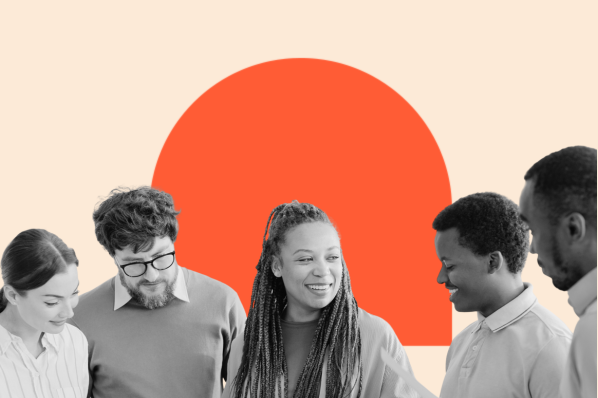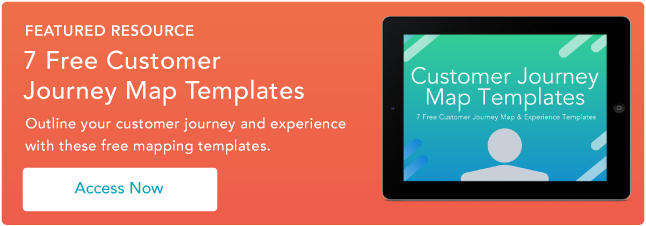Building experiences for diverse customers is the differentiator.
When teams with diverse backgrounds come together, they have a higher likelihood of crafting customer experiences that truly embrace diversity. And we know that diversity at the workplace makes for an awesome place to work.
By acknowledging and designing for the unique needs and preferences of customers, we unlock the potential to create meaningful and personalized interactions that resonate with each individual.
We all know how important personalization is.
So with that in mind, let's dive in and explore how we can successfully cater to the diverse backgrounds of our customers, as well as potential customers, and exceed their expectations.
Expanding Perspectives and Driving Innovation
Designing for diverse user groups requires us to expand our perspectives and challenge preconceived notions. Easier said than done, right?
But as my father once said to me, "A life lived fully is one that embraces change and challenges, for it is through the breaking of old habits that new paths are forged."
By considering the needs, desires, and aspirations of a wide range of users, we open ourselves up to new ideas and possibilities — we break old habits and forge new paths.
The science behind my father's wisdom holds up too. Teams that are more diverse have a tendency to produce better results more often than those that aren't as diverse.
So we know that expanding perspectives fosters a culture of innovation, encouraging us to step out of our comfort zones and explore different ways of thinking.
It stands to reason then that designing for diverse user groups not only fuels innovation but also directly benefits the customers who rely on our services.
By understanding and addressing their unique needs, we can create tailored experiences that cater to their preferences, resulting in much greater satisfaction and engagement with our offerings.
When we design outside our boundaries, we break free from the limitations of a homogeneous approach - we see people for who they are and not an entry on a data sheet or some faux-persona up on the wall of the office.
"New research provides compelling evidence that diversity unlocks innovation and drives market growth—a finding that should intensify efforts to ensure that executive ranks both embody and embrace the power of differences." - Harvard Business Review, How Diversity Can Drive Innovation
Each individual brings a unique set of experiences, backgrounds, and preferences. By embracing this diversity, we tap into a wellspring of creativity that leads to innovative solutions.
Ideas collide, perspectives merge, and through this vibrant exchange, we discover fresh insights that can revolutionize products, services, and overall user experience.
You might be thinking that this all sounds dandy. Common sense even in today's world, but it's the application of expanding perspectives and driving innovation that is most difficult of all.
This is all merely academic if you can't get buy-in from stakeholders.
That's why to really foster and leverage diverse decision-making practices, you can be the driving force within the workplace to push boundaries forward. How?
Try the following:
- Hiring manager? Build a diverse team: Assemble a team with individuals from diverse backgrounds, cultures, capabilities, and disciplines to bring different perspectives and expertise to the table.
- Encourage open dialogue: Create a culture that values and respects diverse viewpoints, where team members feel comfortable expressing their opinions and challenging assumptions.
- Conduct inclusive user research: Include individuals with varying demographics, abilities, and preferences in your user research and usability testing to ensure designs meet the needs of a wide range of users. A deep understanding of people comes with user research.
- Embrace co-creation and adaptation: Involve stakeholders and users in the process through co-creation sessions and collaborative workshops, while maintaining a culture of continuous learning and adaptation based on feedback and new insights. Understanding users drives business success.
Internally, when people feel seen, heard, and valued, they become loyal advocates of a process based on diversity. Externally, customers become loyal advocates too.
Building Trust and Connecting with a Broader Audience
Designing for diverse user groups goes beyond surface-level representation.
It's about understanding the nuances of different cultures, identities, and lived experiences. When we take the time to truly listen and empathize, we build trust and forge authentic connections with our audience.
This goes far, far beyond any goodwill campaign that some customers will cynically see as nothing but lip service.
As an example, consider the impact of localization on global products. By adapting our designs to different languages, cultural contexts, and user expectations, we demonstrate respect and appreciation for diverse markets.
Simply translating a predominately English-speaking website to another language isn't enough. The localized approach needs to improve the user experience of users in other countries.
"Diversity and inclusion in design are about empathizing and adapting designs to the target audience to address the various needs they may have. Designing with diversity and inclusion in mind will increase the target audience's loyalty, trust, and engagement." - Online Optimism, The Importance of Diversity and Inclusion in Design
Designing for diverse user groups also strengthens our ability to anticipate and address emerging market trends. As societies evolve, so do consumer preferences and behaviors.
By actively engaging with diverse user groups, we gain valuable insights into shifting demographics, emerging technologies, and evolving market dynamics.
This proactive approach keeps us ahead of the curve and ensures our products and services remain relevant and impactful.
Want to be proactive? Try this:
- Conduct market research and segment your audience based on demographics, preferences, and behaviors to tailor your approach and messaging. Regardless of where customers are based, they want to be understood, they don't want to be some peripheral afterthought.
- Utilize diverse communication channels, such as social media, email marketing, and influencers, to expand your reach and connect with a wider range of people.
- Cultivate inclusive messaging and content by considering cultural sensitivity, language preferences, and inclusive visuals to resonate with diverse groups. Work with cultural sensitivity groups to get a first-hand understanding of other cultures.
- Implement personalized and targeted campaigns based on data-driven insights to address the unique needs and interests of specific audience segments, creating a stronger connection and increasing engagement.
The Journey of Continuous Learning and Improvement
Designing for diverse user groups is not a one-time effort; it is an ongoing journey of continuous learning and improvement.
It should permeate throughout an organization, regardless of job title or seniority. It requires us to embrace feedback, iterate on our designs, and adapt to ever-changing user needs.
By fostering a culture of inclusivity and diversity within our organizations, we create a breeding ground for continuous learning and improvement.
We've already mentioned some fantastic ways in which we can do this. I cannot overstate how powerful conducting research and engaging directly with our users is.
Time and time again as a UX professional, relaying insightful research back to stakeholders has done more for their customer perception than anything else.
Surveys, interviews, and usability testing provide invaluable insights into the diverse perspectives and needs of our audience. It's the closest we can get to putting ourselves in the shoes of others.
By incorporating these insights into our process, we can make informed decisions, based on evidence, that lead to more inclusive and impactful solutions.
Here's how to board the train of continuous learning and improvement:
- Continuous improvement through feedback: Embrace feedback, iterate on designs, and adapt to changing user needs for ongoing improvement. Prioritize by importance to the user, team effort, and costs.
- Embrace user-centricity: Have I mentioned how important research is? Engage directly with users through surveys, interviews, and usability testing to gain diverse perspectives and better understand their needs.
- Collaboration and diversity: Foster collaboration among diverse teams to encourage the exchange of ideas and perspectives, leading to innovative solutions. Collaborate with teams outside of your normal daily function. If you really want to mix things up - have people from different teams working together, as opposed to designers working amongst designers, developers working with developers, etc.
A collaborative environment encourages the cross-pollination of thoughts, fostering an atmosphere where everyone's voice is valued and innovation thrives.
Continuous learning and improvement fuel an ever-evolving journey of personal and professional growth, opening doors to limitless potential and boundless success. I don't know about you, but I find that incredibly exciting!
Let's Break Boundaries
Perhaps it's cliche, but I truly believe that we as a collective species unlock a world of possibilities by breaking boundaries and embracing diverse designs.
Creating experiences that resonate with a broader audience, that forge authentic connections, and build trust is why I became a designer. It's now why I advocate for diversity not just in the workplace, but in life.
Whether it's through expanding perspectives, fostering inclusivity, or connecting with emerging markets, the benefits of designing for diverse user groups are undeniable - both from a societal perspective and a scientific one.
What do we have to lose?
Let's embark on this transformative journey of continuous learning and improvement.
Let's challenge ourselves to step outside our comfort zones, listen to the diverse voices of our users, and create designs that reflect the richness and complexity of the world we live in.
By doing so, we're not only elevating our own brands and products but also contributing to a more inclusive and equitable society. But most of all, we create products built on compassion and understanding.
The time to embrace the power of diverse design is now. Now is the time to shatter boundaries, celebrate diversity, and unlock the true potential of innovation.
Together, we can create a future where every user feels seen, valued, and empowered.
Inclusivity has transcended being an afterthought and has evolved into an integral part of our daily existence.
User Experience


